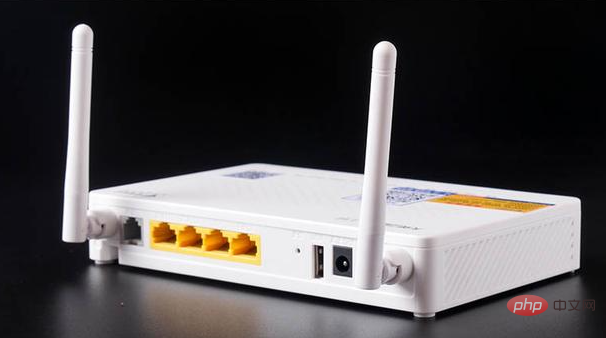
The device that supports the interconnection between LAN and WAN is called a router; the router can analyze the destination address of data packets from various types of networks and convert the addresses of non-"TCP/IP" networks into "TCP/IP" "Address, the router can connect any two different networks, but these two different networks need to abide by one principle, that is, use the same network layer protocol.

The operating environment of this tutorial: Windows 10 system, DELL G3 computer.
The device that supports the interconnection between the LAN and the WAN is called a router.
The router can analyze the destination address of data packets from various types of networks, convert the address of the non-TCP/IP network into a TCP/IP address, or vice versa; and then based on the selected route The algorithm sends each data packet to the designated location according to the best route. So the router can connect non-TCP/IP networks to the Internet.
Routers can connect any two different networks, but one principle must be followed between these two different networks, which is to use the same network layer protocol so that they can be connected by the router.

Extended information
The router uses the network addressing function to enable the router to determine the best route in the network. The best path. The network portion of the IP address determines the packet's destination network, and the connection to the destination node is determined by the host portion of the IP address and the device's MAC address.
When an interface of the router receives a data packet, it will check the destination network address in the packet to determine whether the destination address of the packet exists in the current routing table (that is, whether the router knows the route to the destination network). path). If the destination address of the packet is found to be the same as the network address connected to an interface of this router, the data will be forwarded to the corresponding interface immediately.
If it is found that the destination address of the packet is not its own directly connected network segment, the router will check its own routing table, find the interface corresponding to the destination network of the packet, and forward it out from the corresponding interface; if If the recorded network address does not match the destination address of the packet, it will be forwarded to the default interface according to the router configuration. If the default interface is not configured, an ICMP message that the destination address is unreachable will be returned to the user.
For more related knowledge, please visit theFAQcolumn!
The above is the detailed content of What is the name of the device that supports the interconnection of LAN and WAN?. For more information, please follow other related articles on the PHP Chinese website!